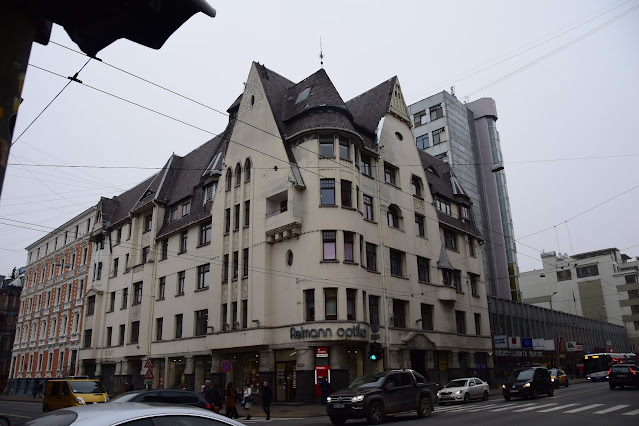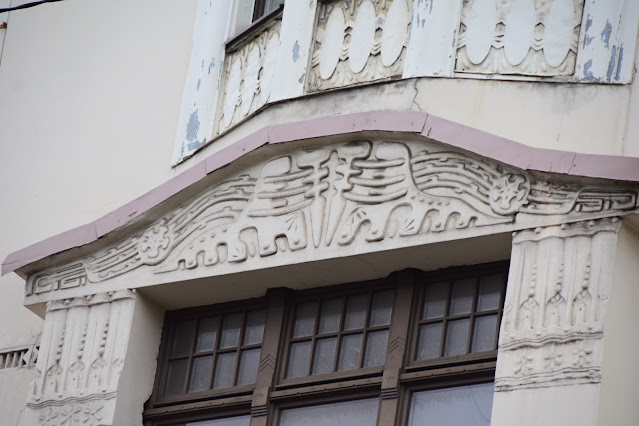Another variant of Riga Art Nouveau is National Romanticism, which Janis Krastins says "reflected the efforts of Latvian architects to create a national architecture rooted in the architectural traditions of indigenous wooden buildings as well as stemming from their own imagination. . . . Ornamentation is typified by the application of ethnographic motifs." This search for a national style is similar to the attempts of Hungarian architects (as well as other architects of the Austro-Hungarian empire) to find a style that reflects (or constructs) their own sense of national identity. This desire is what drove the Hungarian Secession. Starting from Odon Lechner's use of ethnographic descriptions of Transylvanian embroidery and dress, as well as his sense of the roots of Hungarian nationality lay in the east. But the Riga buildings look more like those of the group of younger Hungarian architects called the Fiatalok, most notably Karoly Kos, who used as inspiration the characteristic structures and forms of traditional Hungarian architecture, particularly the wooden houses of Transylvania.
Krastain's apartment house with shops, Brivebas Iela 47, 1908. Architect E. Laube.
Krastins describes this as "one of the most outstanding National Romanticism building[s] designed by Laube. The austere though plastically elaborated composition of volumes uses the architectural language of national wooden building construction." The ornamental decorations display stylized ethnographic motifs.
Berzinki's apartment house with shops. K. Valdemara Iela 67. 1909. Architect E. Laube. Krastins" An impressive corner mark of one of the most impressive National Romanticism ensembles in Riga."
Followed by Rozite's apartment house at K. Valdemara 69. 1909. Architect A. Vanags.
Both display stylized folk motifs.
Hummel's apartment house with shops. Gertrudes Iela 56. 1908. Architect K. Peksens. Note the beautiful door.
These buildings are somewhat massive but lovely in their details. Whether they are Art Nouveau is another question. Whether they are Jugendstil is also another question. Perhaps labels aren't that important. Clearly buildings of this "type" show an urge to be modern yet tied to the past, to push for a national identity while building within accepted constraints. It was fun to see them, but I don't see an obsession developing as it did in Hungary.
#Riga
#RigaArchitecture
#RigaArtNouveau
#RigaNationalRomanticism

















No comments :
Post a Comment